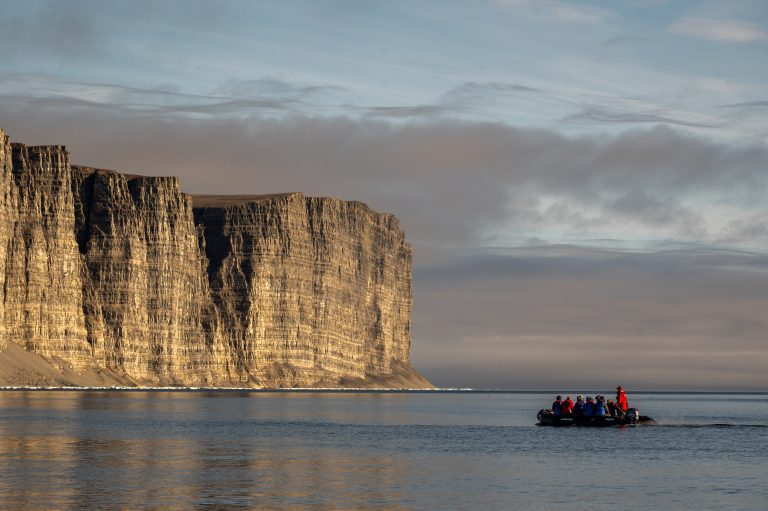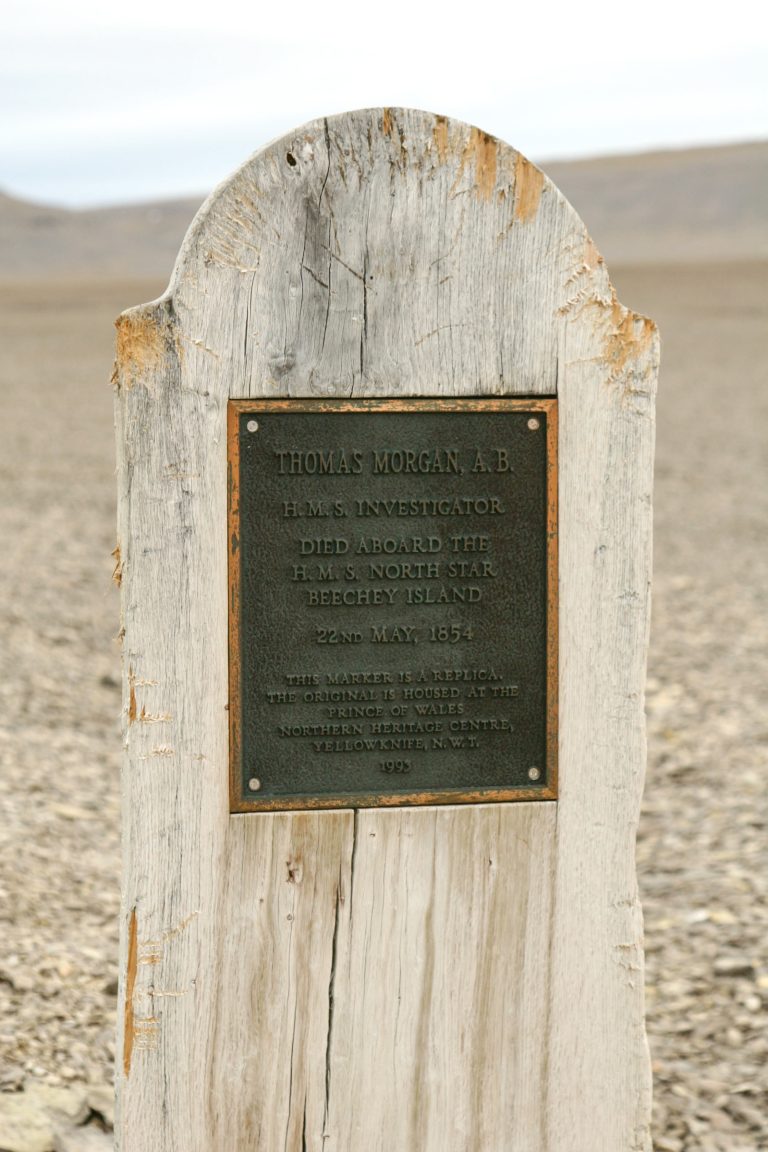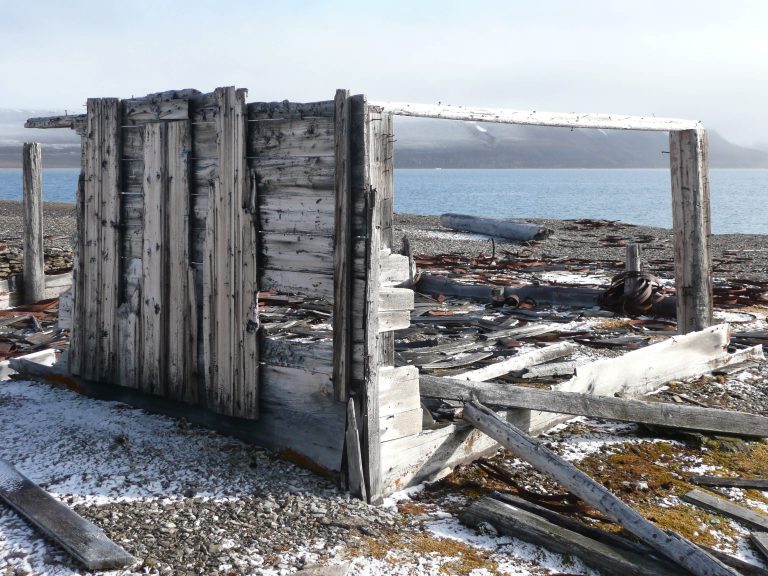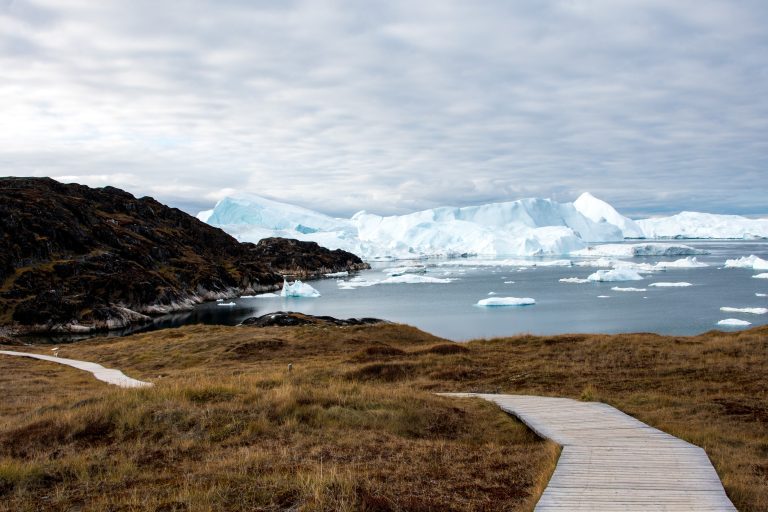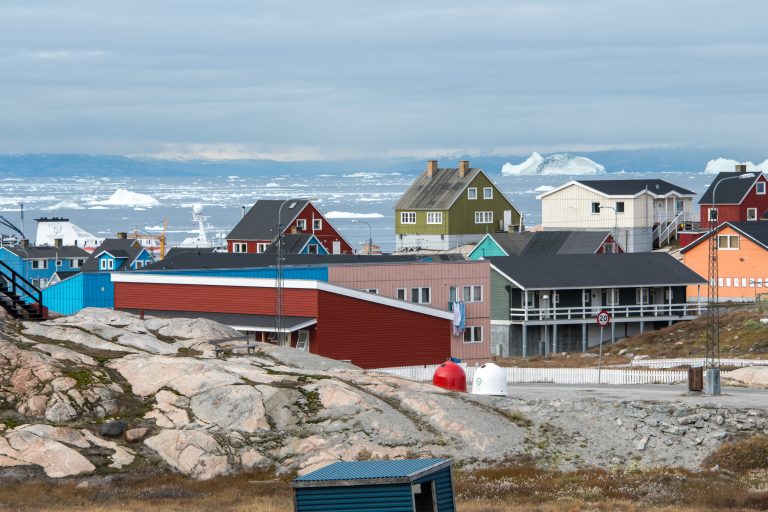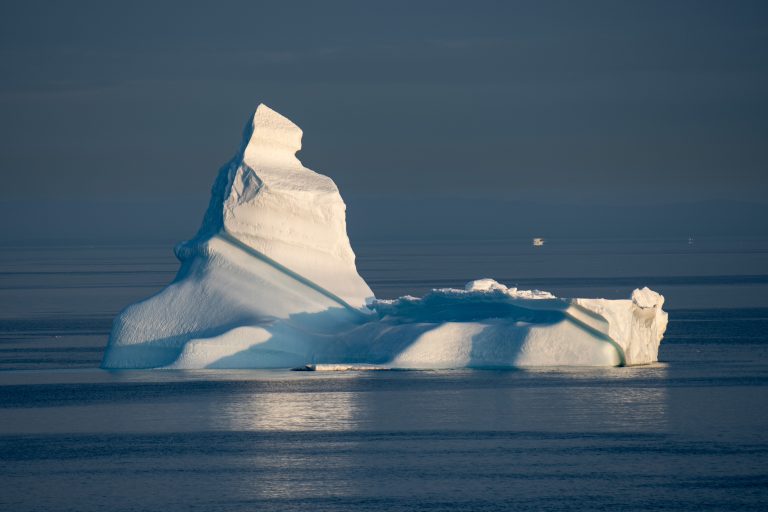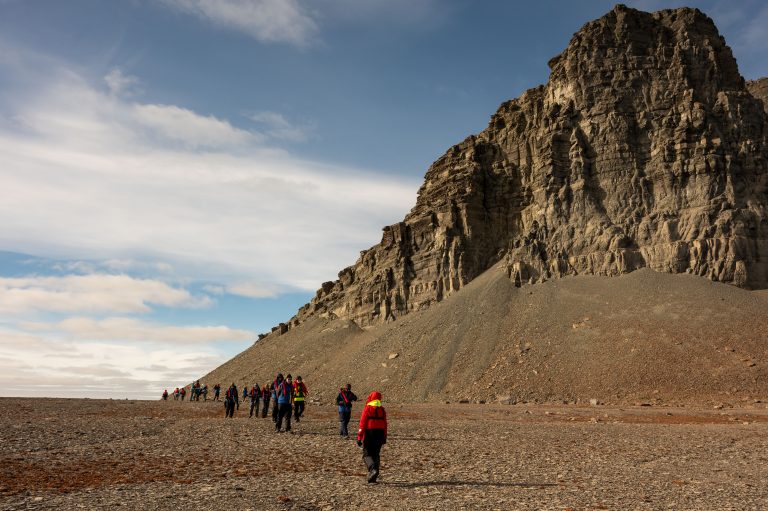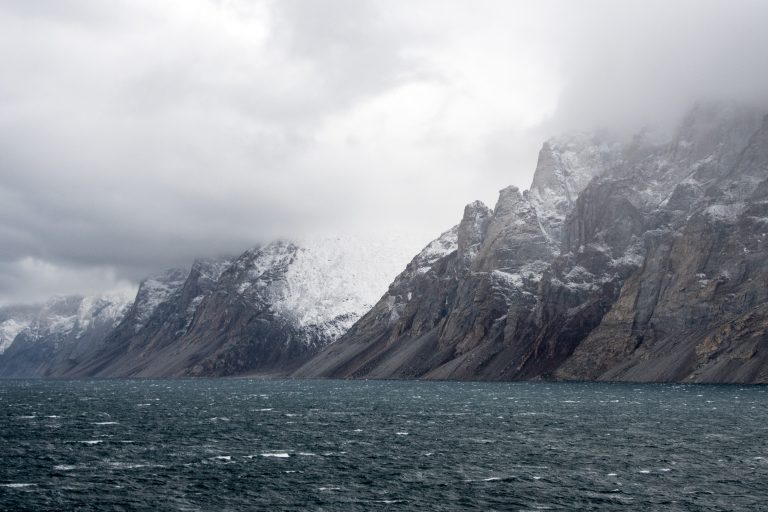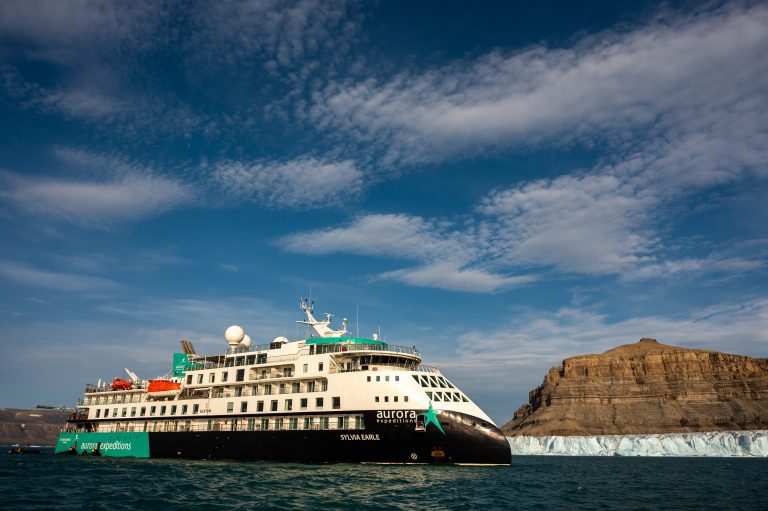
Traversing the Northwest Passage - 29 Days
Onboard Sylvia Earle – 132 passengers
On this epic voyage inspired by Roald Amundsen’s historic expedition, we attempt to sail the full length of the Northwest Passage, carving our way west from Greenland through the labyrinthine maze of waterways that hug the fabled islands of Arctic Canada until we reach the Beaufort Sea. Building on our classic Northwest Passage voyage, we visit historical sites explored by heroic explorers, meet the local Inuit that call this region home, marvel at striking landscapes and search for enigmatic wildlife found in this unique corner of the world. Pack ice may halt our voyage through the passage, so brace yourself for a genuine expedition where adventure awaits at every turn.
Voyage Highlights:
- Stand in awe of Ilulissat Icefjord, a UNESCO World Heritage Site
- Hike on Devon Island, the world’s largest uninhabited island, which features stunning geology, fjords and glacial valleys to explore
- On Beechey Island, visit the graves of explorers from John Franklin’s expedition
- Meet remarkable Inuit locals whose lives in this remote part of the world are anything but ordinary
Tour Dates
-
Mar 13 - Mar 25, 2025 (13 days)
-
Aug 27 - Sep 24, 2025 (29 days)
Itinerary
Day 1: Arrive in Toronto
Having made your way to Toronto Airport, check-in at our group hotel located near the airport for an overnight stay. Accommodation: Westin Toronto Airport Hotel (or similar)
Day 2: Charter flight to Nuuk, Greenland & Embarkation
After breakfast at the hotel, board our charter flight to Nuuk, Greenland, where our vessel the Sylvia Earle awaits. After boarding, there is time to settle into your cabin before our important safety briefings. This evening, meet your expedition team and crew.
Day 3: Sisimiut
Greenland’s second largest town, Sisimiut is located approximately 54 kilometres (33.5 miles) north of the Arctic Circle, meaning that during summer, you can experience the midnight sun here. The town is famous for the old blue church with the gate made of whale bone. In the cosy museum next door to the church, you will find an excellent reconstruction of an Inuit turf house as well as exhibits of local history and early life in Greenland. Sisimiut offers hiking trails with various degrees of difficulty. The easier trails take you through the town itself, its outskirts and into the mountains, where you will find spectacular vantage points.
Approximately 4,500 years ago, the Saqqaq culture arrived from Canada and settled in the area. They lived here for approximately 2,000 years, after which they mysteriously disappeared from the area. The Dorset culture arrived around 500 CE and stayed until the 1200s until they were replaced by the Thule culture, and today, most of the population of Sisimiut are descendants of the Thule culture.
Day 4: Illulissat
Known as the ‘birthplace of icebergs’, this region produces some of the most dazzling icebergs found anywhere on Earth. Hike to the UNESCO World Heritage-listed Icefjord and stand in awe of its immensity. Sermeq Kujalleq, also known as Jakobshavn Glacier, is the most productive glacier – not only in Greenland but the entire Northern Hemisphere. It produces 20 million tonnes of ice each day, all floating into the Ilulissat Icefjord and Disko Bay. Conditions permitting, enjoy a Zodiac cruise at the mouth of the fjord and kayak through sea ice and icebergs.
Day 5: Qeqertarsuaq (Disko Island)
This compelling island seems to have more in common with Iceland than Greenland. While most of the interior is mountainous and glaciated, its beautiful shorelines boast black sandy beaches, unusual basalt columns, hot springs and dramatic lava formations. Zodiac cruise in Disko Bay, which features fascinating geology. It is also a hotspot for marine life including humpback, fin, minke and bowhead whales.
Day 6: At sea, enter Canada
Our team of experts entertain us with informative talks about wildlife, geology and epic tales of early explorers such as Franklin and Amundsen. Reaching the coast of Baffin Island, we may encounter Greenland’s famous icebergs. Keep watch for humpback, sei, sperm and fin whales, as well as various species of seals such as ring and harp seal.
Days 7-9: Baffin Island
The east coast of Baffin Island features hidden bays that are feeding grounds for bowhead whales and where glaciers calve into the sea. Sail along inlets and fjords surrounded by towering mountains that feature impressive geology. Some of the places that we may visit include: Home Bay, Sillem Island, John Ford Fjord, Sam Ford Fjord and Scott Inlet. Conditions permitting, we hope to go ashore at Pond Inlet and be treated to a warm welcome from the local community.
Covered with mountains, icefields, steep cliffs, snowfields and glaciers, Bylot provides nesting habitat for large numbers of thick-billed murres and black-legged kittiwakes. A total of 74 unique species of arctic birds thrive on this island. Due to the richness of the wildlife and the beauty and diversity of the landscapes in the area, a large portion of the island was also included in the Sirmilik National Park, established in 2001. We plan to sail along the coastline of Bylot Island, where hope to enjoy the scenery and outstanding birdlife.
Days 10-12: Devon Island, Lancaster Sound
At a latitude of almost 75° degrees north, we are now truly in the High Arctic. Here, nutrient-rich waters support an abundance of wildlife, giving the area the moniker ‘wildlife superhighway’ of the Arctic. Devon Island is the largest uninhabited island on Earth and features stunning geology, with flat-topped mountains and glacial valleys giving Devon Island its unique character. We hope to visit Dundas Harbour to enjoy offers walks on undulating tundra, and perhaps some birdwatching. Other possible places that we might visit include Croker Bay and Maxwell Bay. A dilapidated Royal Canadian Mounted Police outpost and remnants of a Hudson’s Bay Company trading post can be found here. In the bay, walruses are often present.
At the western end of Devon Island lies Beechey Island, where we plan to land. Named after Frederick William Beechey, the island is one of Canada’s most important arctic sites and is a designated Canadian National Historic Site. During the Franklin expedition of 1845–46, Franklin attempted to sail through the Northwest Passage with HMS Erebus and HMS Terror, with perilous results – three of his men are buried here. Roald Amundsen landed at Beechey Island in 1903, during the first successful voyage by ship to fully transit the Northwest Passage from the Atlantic Ocean to the Pacific Ocean.
Days 13–16: Expedition cruising
Our options for the following days are heavily dependent on unpredictable sea ice. We may attempt to cross Bellot Strait if conditions allow, giving us the possibility to sail Prince Regent Sound and search for wildlife and to perhaps visit historic Fort Ross – an abandoned Hudson’s Bay trading post. Other places we may visit include Prince Leopold Island, which features magnificent vertical cliffs. Around the low-lying Tasmanian Islands, we may encounter similar pack ice that halted Franklin’s expedition in 1845. If conditions allow, we might enjoy a walk at historic Cape Felix on King William Island and learn more about Franklin’s ill-fated expedition.
Prince Leopold Island, Port Leopold
On the southern side of Lancaster Sound opposite Beechey Island lie the towering bird cliffs of Prince Leopold Island— the most important bird sanctuary in the Canadian Arctic, with approximately 500,000 birds nesting pairs here in summer. Ringed seals are often spotted on the sea ice. Nearby Port Leopold is a historic site where British explorer James Clark Ross wintered in 1848 while searching for the missing Franklin expedition. The ruin of a century old Hudson’s Bay trading post can be found there, and polar bear often lurk nearby. The shallow gravel beds attract beluga whales, which come to moult in this part of the Arctic each summer.
The following are places we hope to visit:
Coningham Bay
Across from Victoria Strait, Coningham Bay lies on the shores of Prince of Wales Island. This is a polar bear hotspot where the majestic creatures come to feast on beluga whales that are often trapped in the rocky shallows at the entrance to the bay. It is not unusual to find the shoreline littered with whale skeletons – and very healthy-looking polar bears!
King William Island
Remains attributed to the Franklin expedition have been found at 35 different locations on King William Island and on nearby Adelaide Peninsula. South of Cape Felix, in Victoria Strait, we hope to get close to where the HMS Erebus and HMS Terror were abandoned in 1848.
Day 17-22: Coronation and Amundsen Gulfs
Your experienced expedition team will create your day-by-day itineraries based on sea ice and weather conditions. Apart from Franklin, other heroic explorers including Amundsen explored this territory, and we may visit the same places as early explorers. We hope to meet the resilient locals who make the extreme far north their home.
In our Zodiacs, we plan to explore the coastlines, bays and hidden estuaries of the region, and delight in the show of autumn colours during this season of change. Hold your breath as we near the geological wonder evocatively known as the ‘Smoking Hills,’ where the stench of sulphur rises from below the earth. Where it’s possible to land, we stretch our legs on hikes to explore the dramatic landscapes of hills, valleys, cliffs and canyons of the region.
Below are some of the places in the area that we may visit:
Cambridge Bay
The administrative and transportation hub of the region, Cambridge Bay is the largest stop for passenger and research vessels traversing the Northwest Passage and unofficially marks the midpoint for voyages of the Northwest Passage. Zodiac ashore for an exploration of this Inuit settlement located in the high arctic. Enjoy a walk through the village, where you can visit the local church, visitor centre and support the local community by purchasing some locally made handicrafts. In the old town, we plan to visit the ancient archaeological sites of the Pre-Dorset, Dorset and Thule people. Wildlife abounds in this area, and you might see caribou, musk ox and seals. The tundra is ablaze with wildflowers and birds including jaegers, ducks, geese and swans visit the area in large numbers.
Johansen Bay, Edinburgh Island
Edinburgh Island is a small and uninhabited island in Canada’s Nunavut region. The scenery consists of colourful flowering shrubs, beaches tinged in stunning ochres, while the surrounding cliffs shaded in rich, deep tones. We hope to enjoy a Zodiac excursion within an estuary of at the northeast end of Johansen Bay and up the river towards the lake. A possible walk to a lookout overlooking the lake offers spectacular views over lakes, sea and mountains. Wildlife including caribous, reindeer, arctic foxes, hares and peregrine falcons frequent the area.
Jesse Harbour, Banks Island
Located in the north of Canada’s Northwest Territories, Banks Island, the fifth largest island in Canada, is home to approximately 60 per cent of the world’s population of Lesser Snow Geese. Arctic foxes, wolves, polar bears, caribous, musk ox and many birds are also found here. Grizzly bears are occasionally spotted, and bowhead whales are often seen offshore. The dramatic cliffs on the southeast coast feature colourful yellow, white and red quartzites, while, on the west coast is characterized by long, sandy offshore bars. Nelson Head cliffs features ancient Precambrian rock that is almost 2 billion years old.
Smoking Hills, Franklin Bay
The smoking Hills in Canada’s Northwest Territories have been smouldering, sending plumes of gas across the landscape, for centuries. Technically sea cliffs, you would be forgiven for thinking that the multicoloured fiery natural phenomenon is the set to an apocalyptic movie depicting the end of the world. The smoke is caused by layers of combustible, sulphur-rich lignite (brown coal) that ignites and emit sulphurous gas into the air, when exposed to erosion and landslides, which also creates a dazzling colouration of the rocks.
Days 23-25: Beaufort Sea
Excitement builds as we sail the Beaufort Sea. Whether you are out on deck or in the comfort of one the observation lounges, watch as the captain navigates our state-of-the-art vessel through these waterways, which is frozen for most of the year. Keep a close watch for marine wildlife including Beluga whales that are often seen here. At Prudhoe Bay, we farewell Canada and enter the United States.
Days 26-27: Chukchi Sea and Bering Strait
As we sail westwards to Nome, along the northern coast of Alaska to where the U.S and Russia are only 100 km (60 miles) apart, separated by the Bering Sea, there is ample time to reflect on our adventures while scanning the water for marine life. Share, edit and submit pictures in our photo competition and attend final lectures from our team of onboard experts. We hope to get permission to ship cruise close by Point Hope, Little Diomede and King islands in Alaska.
Day 28: Disembark in Nome & Fly to Anchorage
In Nome, farewell your expedition team and crew after sharing a once-in-a-lifetime voyage together. After disembarking, we transfer to the airport for your charter flight to Anchorage for an overnight stay. Accommodation: Hilton Hotel Anchorage (or similar)
Day 29: Depart Anchorage
Transfer to the airport for your onward journey.
In true expedition style we encourage exploration and adventure, offering flexibility in challenging environments in a way that puts you among the action to see and do as much as possible. This itinerary is only a guide and subject to change due to ice and weather conditions.
Route Map

Trips and Rates
Please note, rates are Per Person in USD
Single Travelers:
- If willing to share a cabin, we can match you with another or other passengers of the same gender to avoid a single supplement.
- Single occupancy price is 1.5x the per person share price
Adventure Options:
- Kayaking Program – requires previous kayaking experience and an intermediate paddling level:
- $680/person on Spitsbergen: Realm of the Ice Bear (8 days)
- $830/person on Wild Landscapes of West Greenland
- $870/person on Jewels of the Arctic (12 day trips)
- $980/person on Svalbard Odyssey, Jewels of the Arctic (15 Days), Greenland Odyssey, Southern Greenland
- $1,190/person on Svalbard in Depth, Northwest Passage (16-17 day trips) & Northern Lights Explorer
- $1,660/person on Arctic Complete & Traversing the Northwest Passage
Single Travelers:
- If willing to share a cabin, we can match you with another or other passenger of the same gender to avoid a single supplement.
- Single occupancy price is 1.5x the per person share price.
Antarctic Adventure Options:
- Kayaking Program: $1,330/person on 12-15 day Antarctica voyages, $1,745/person on 20+ day Antarctica & South Georgia voyages and $1,030/person on 9 day Express trip. Requires previous kayaking experience and an intermediate paddling level.
- Paddling: $640/person
- Camping: $165/person
- Snorkeling: $675/person on 12-14 day Antarctica voyages, $835/person on 20+ day Antarctica & South Georgia voyages and $515/person on 9 day Express trip.
- Alpine Trekking: $1260/person
- Snowshoeing: $370/person on 12-15 day Antarctica voyages and $440/person on 20+ day Antarctica & South Georgia voyages
- Ski/Snowboard Touring: $1395/person – experience required
- Shackleton Crossing on Skis: $2,220/person – experience required
Availability & prices are subject to change at anytime. Please contact us for the real time availability & prices.
Cabin Descriptions

Captain Suite
The largest of all the cabins, the singular Captain’s Suite will take you to the polar regions in ultimate style and comfort. Complete with large lounge area, balcony, walk-in wardrobe and en-suite, you’ll need to book early to secure this suite. The Captain’s Suite features additional amenities including 1 free pair of binoculars per suite, free stocked mini bar (replenished as needed) and 1 free bottle of champagne.
Cabin & balcony combined size: 471.5 sq. ft. (43.8m2)

Junior Suite
The four Junior Suites take in some impressive scenery from their vantage points on Deck 7. When you aren’t enjoying a landing, you can relax in the suites’ separate lounge area, or just watch the world float by from the private balcony. The Junior Suite features additional amenities including 1 free pair of binoculars per suite, free stocked mini bar (stocked once only) and 1 free bottle of champagne.
Cabin & balcony combined size: Up to 448 sq. ft. (41.6m2)
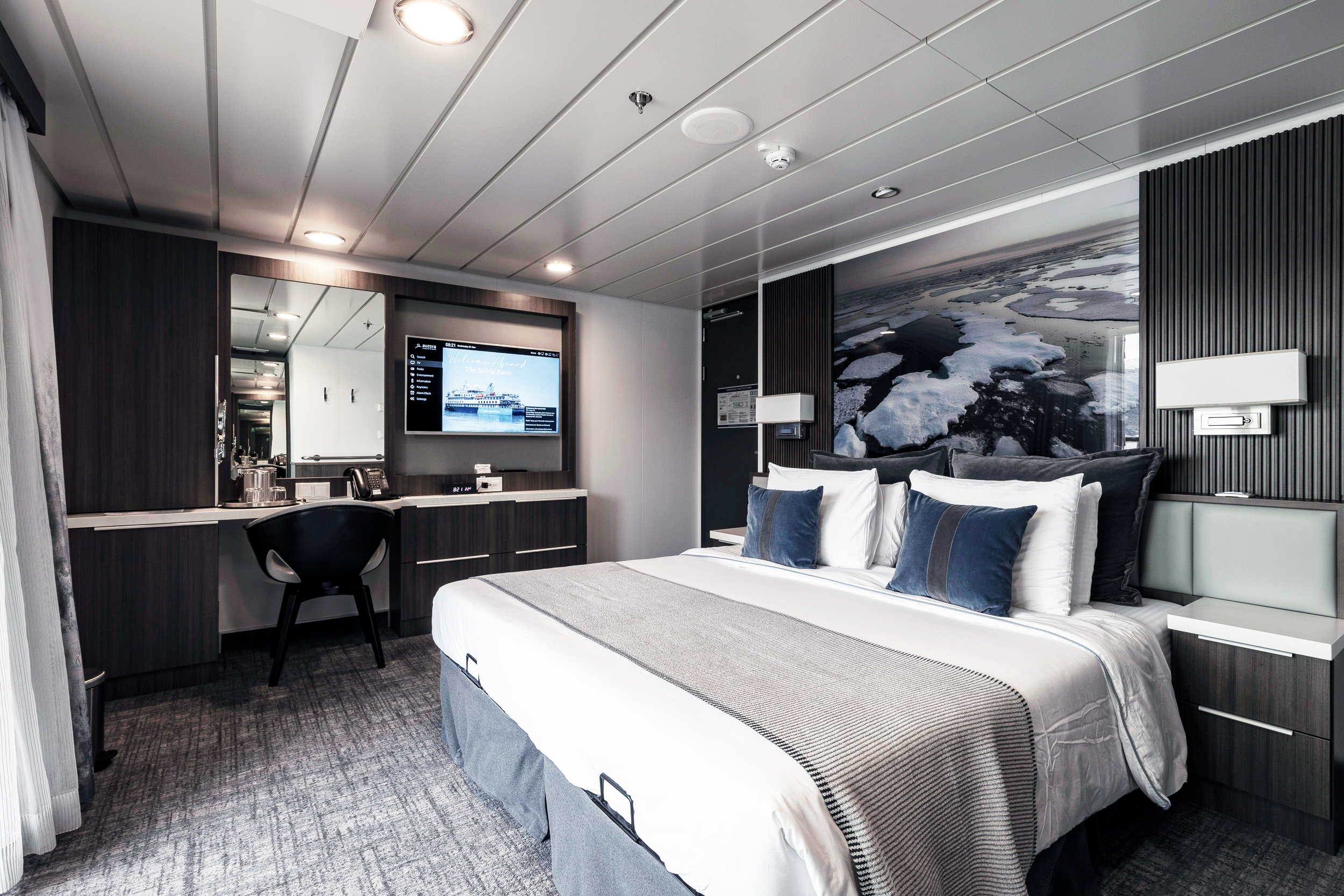
Balcony Stateroom Superior
With a bit more room to stretch the legs, the Balcony Stateroom Superior cabins are perfect for polar adventurers who travel with plenty of gear. Located on Deck 4 and 6, the Staterooms feature floor to ceiling windows, en-suite bathrooms and a comfortable desk area. Some of these rooms are equipped with wheelchair accessible bathrooms.
Cabin & balcony combined size: 314 – 379 sq. ft. (29.2 – 35.2m2)
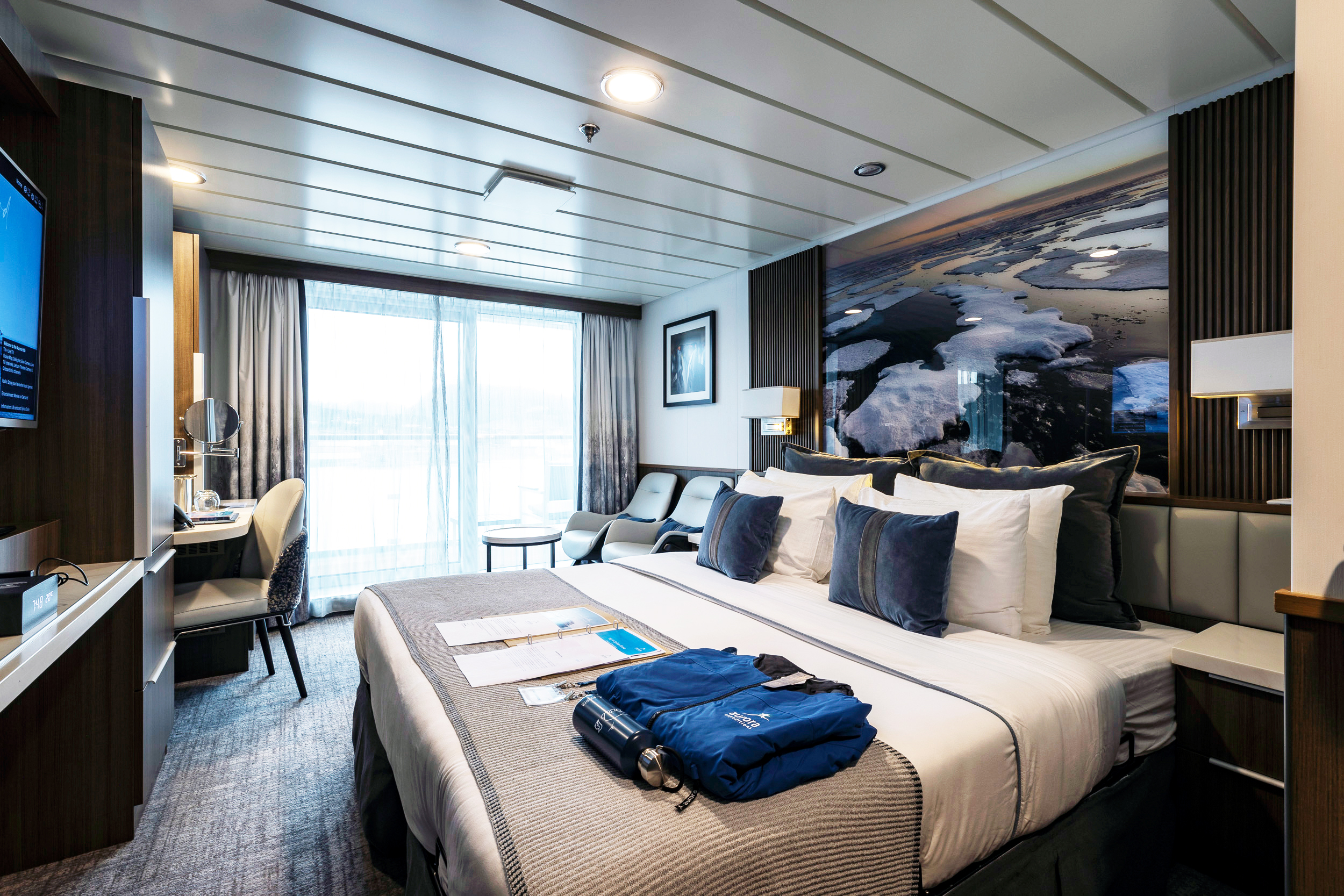
Balcony Stateroom A
The 23 Balcony Stateroom A cabins are a premium cabin and the most abundant on board. These cabins are located in preferred positions on Deck 4 and 6 which provides easy access between Decks via the internal stairs or elevator.
Cabin & balcony combined size: 210 – 309 sq. ft. (19.5 – 28.7m2)
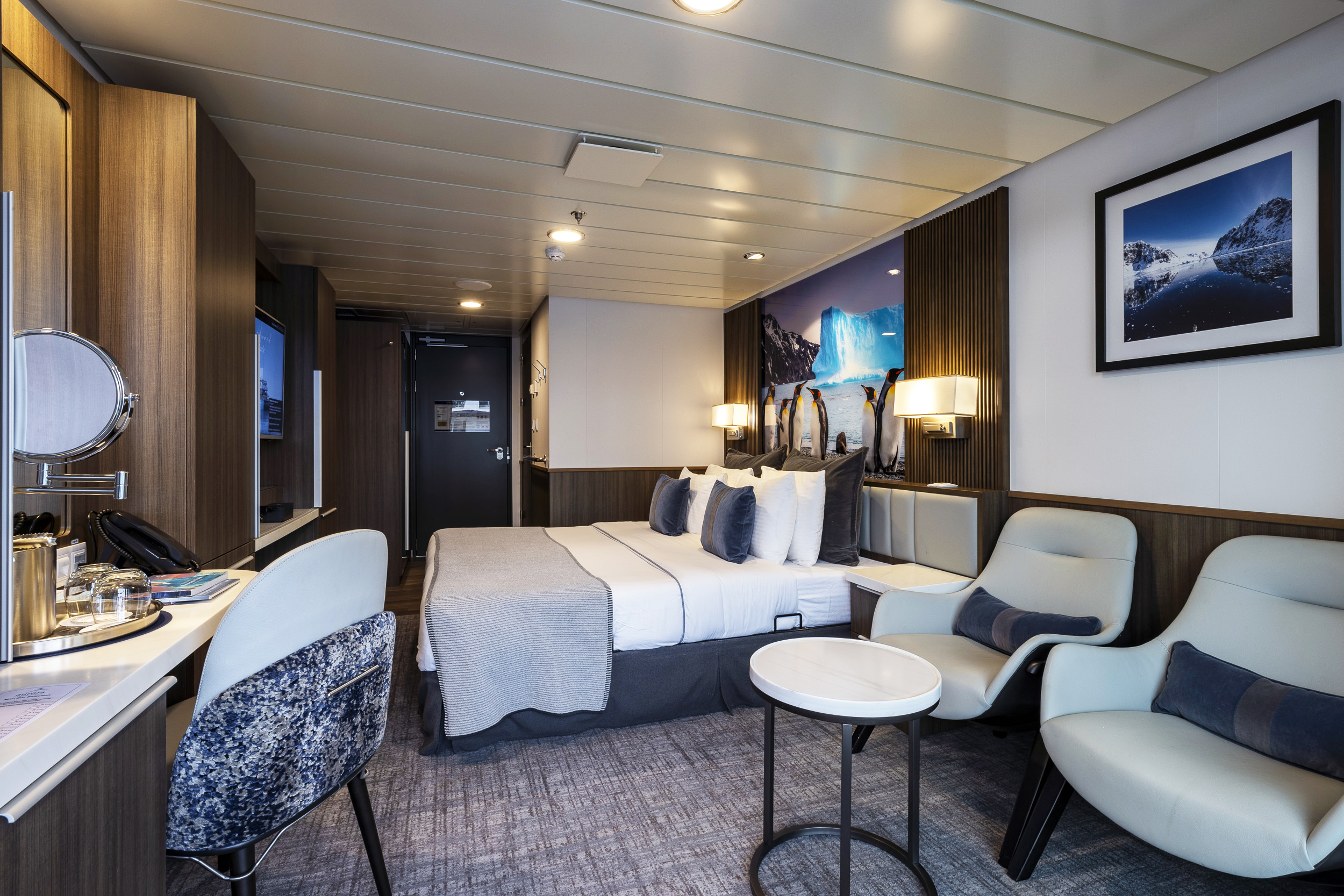
Balcony Stateroom B
The 17 Balcony Stateroom B Cabins are located at the fore and aft of Deck 4 & 6. Many are fitted with interconnecting features making them great for families or groups.
Cabin & balcony combined size: 210 – 309 sq. ft. (19.5 – 28.7m2)
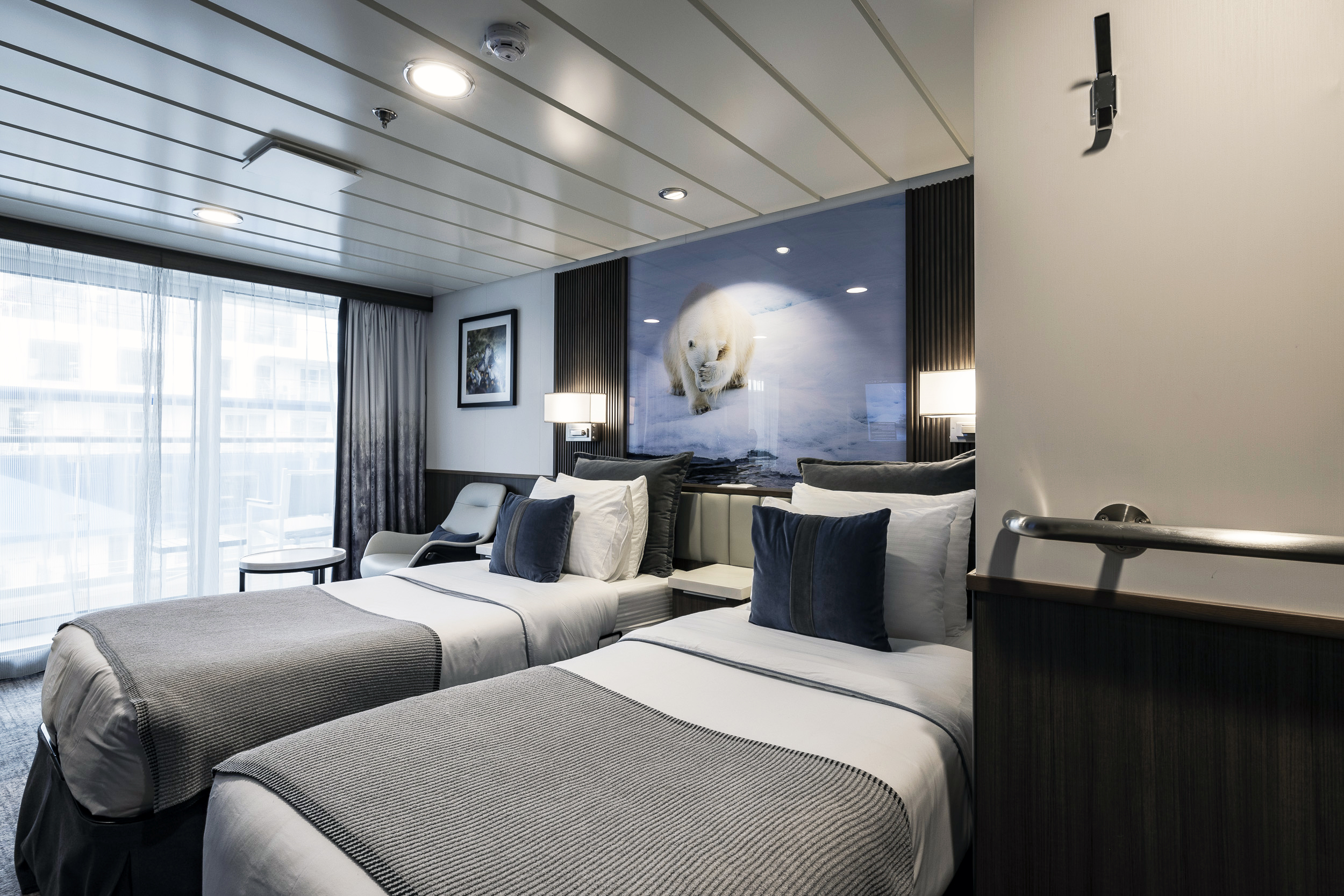
Balcony Stateroom C
The 11 Balcony Stateroom C cabins are the most economical balcony stateroom, fitted with all the necessities and comfortable for up to 2 people. These cabins are on Deck 4 & 6, either in the most forward or aft location or in a mid-ship location with a smaller cabin size.
Cabin & balcony combined size: 210- 309 sq. ft. (19.5 – 28.7m2)
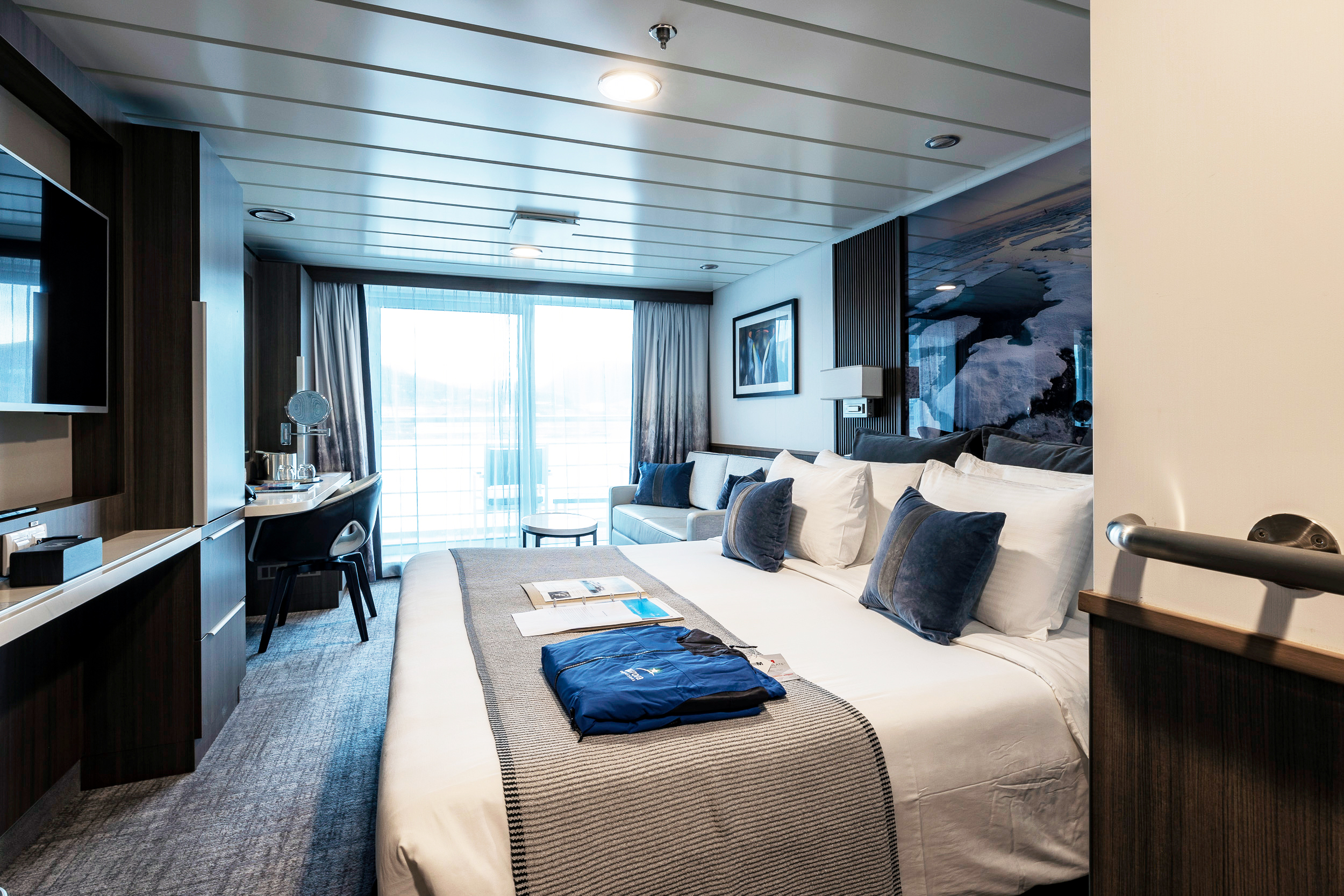
Aurora Stateroom Superior
With a bit more room to stretch the legs, the Aurora Stateroom Superior are perfect for polar adventurers who travel with plenty of gear. Located on Deck 7, the Staterooms feature french balconies, floor to ceiling windows, en-suite bathrooms and a comfortable desk area.
Cabin size: 214 – 224 sq. ft. (19.9 – 20.8m2)

Aurora Stateroom Triple
There are two Aurora Stateroom Triple cabins featuring portholes, all with private en-suites. Located on Deck 3, they’re close to the mudroom and loading platforms.
Cabin size: 244 sq. ft. (22.67m2)
Deck Plan
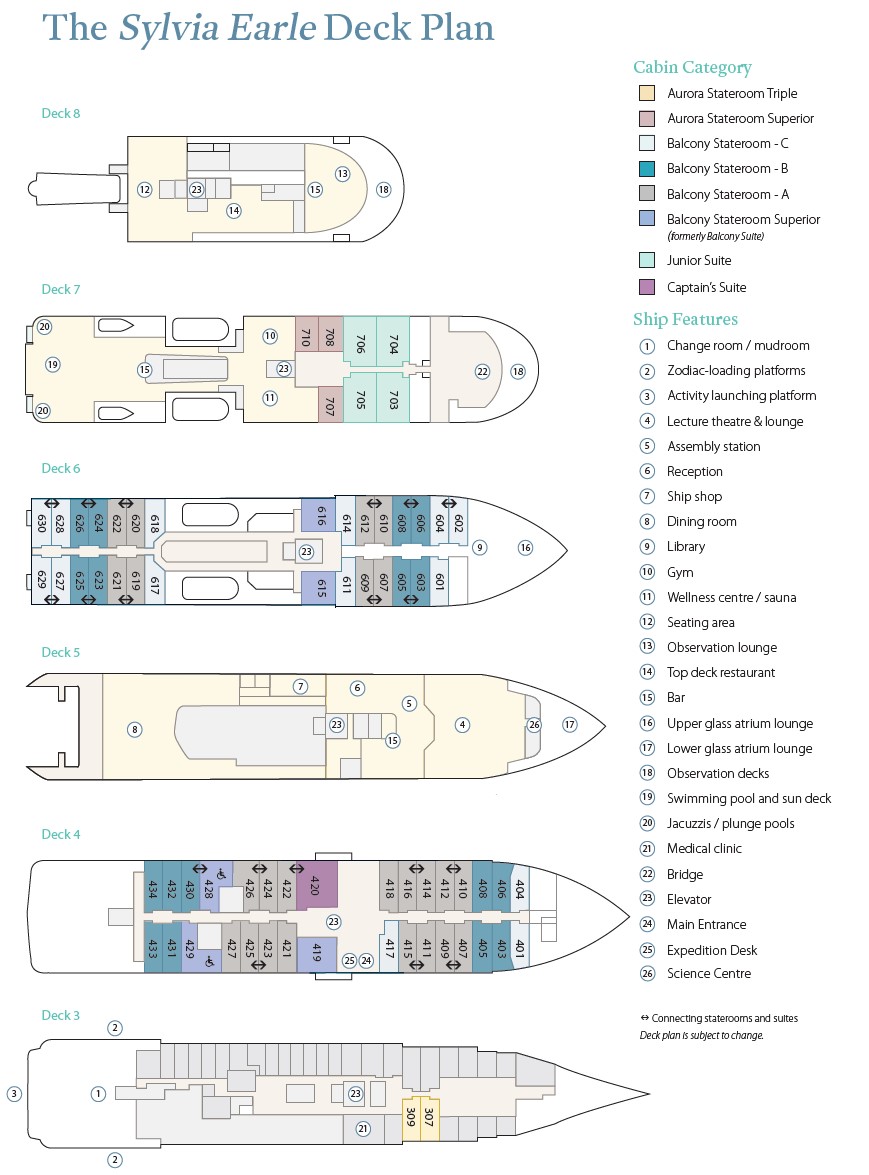
Inclusions & Exclusions
Inclusions:
- All airport transfers mentioned in the itinerary.
- One night’s hotel accommodation including breakfast, in Toronto on Day 1.
- Charter flight from Toronto to Nuuk on Day 2.
- Charter flight from Nome to Anchorage on Day 28.
- One night’s hotel accommodation including breakfast, in Anchorage on Day 28.
- On-board accommodation during voyage including daily cabin service.
- All meals, snacks, tea and coffee during voyage.
- Beer, house wine and soft drinks with dinner.
- Captain’s Farewell reception including four-course dinner, house cocktails, house beer and wine, non-alcoholic beverages.
- All shore excursions and Zodiac cruises.
- Educational lectures and guiding services provided by Expedition Team.
- Complimentary access to onboard expedition doctor and medical clinic (initial consultation).
- One 3-in-1 waterproof polar expedition jacket.
- Complimentary use of Muck Boots during the voyage.
- Comprehensive pre-departure information.
- Port surcharges, permits and landing fees.
Exclusions:
- International or domestic flights not mentioned in the itinerary, unless specified in the itinerary.
- Transfers – unless specified in the itinerary.
- Airport arrival or departure taxes.
- Passport, visa, reciprocity and vaccination fees and charges.
- Travel insurance or emergency evacuation charges.
- Hotel accommodation and meals unless specified in the itinerary.
- Optional excursions and optional activity surcharges.
- All items of a personal nature including but not limited to alcoholic beverages and soft drinks (outside of dinner service), gratuities, laundry services, personal clothing, medical expenses, or phone charges.
Note: A $15 USD per person per day gratuity for the crew is automatically added to your onboard account. It is at your discretion if you would like to remove the tip (or adjust the amount) when you settle your bill. It is not necessary to tip the expedition team members. This gratuity amount is included for suites as part of their ‘Suite Benefits’
